
Hendrick Goltzius, Portrait of Giovanni da Bologna, 1591, chalk, Haarlem, Teylers Museum.
Goltzius, who founded an academy in Haarlem like those in Italy and France, visited Rome in 1590. In addition to many fine drawings of classical sculptures, he took back to the Netherlands this portrait of the Flemish sculptor Jean de Boulogne or Giambologna who had settled in Rome in 1550.

Peter Paul Rubens (after Raphael), Vision of Ezekiel, ca. 1605-1608, red and black pencil, grey watercolour on white paper, Florence, Museo Horne.
This sketch is a copy of Raphael's painting in oil on panel of the same name in the Palazzo Pitti in Florence. It represents God the Father surrounded by symbols of the four Evangelists.

Peter Paul Rubens, Nicolaas Rubens Wearing a Coral Neckless, ca. 1619, white chalk, black chalk and sanguine on paper, Vienna, Albertina.
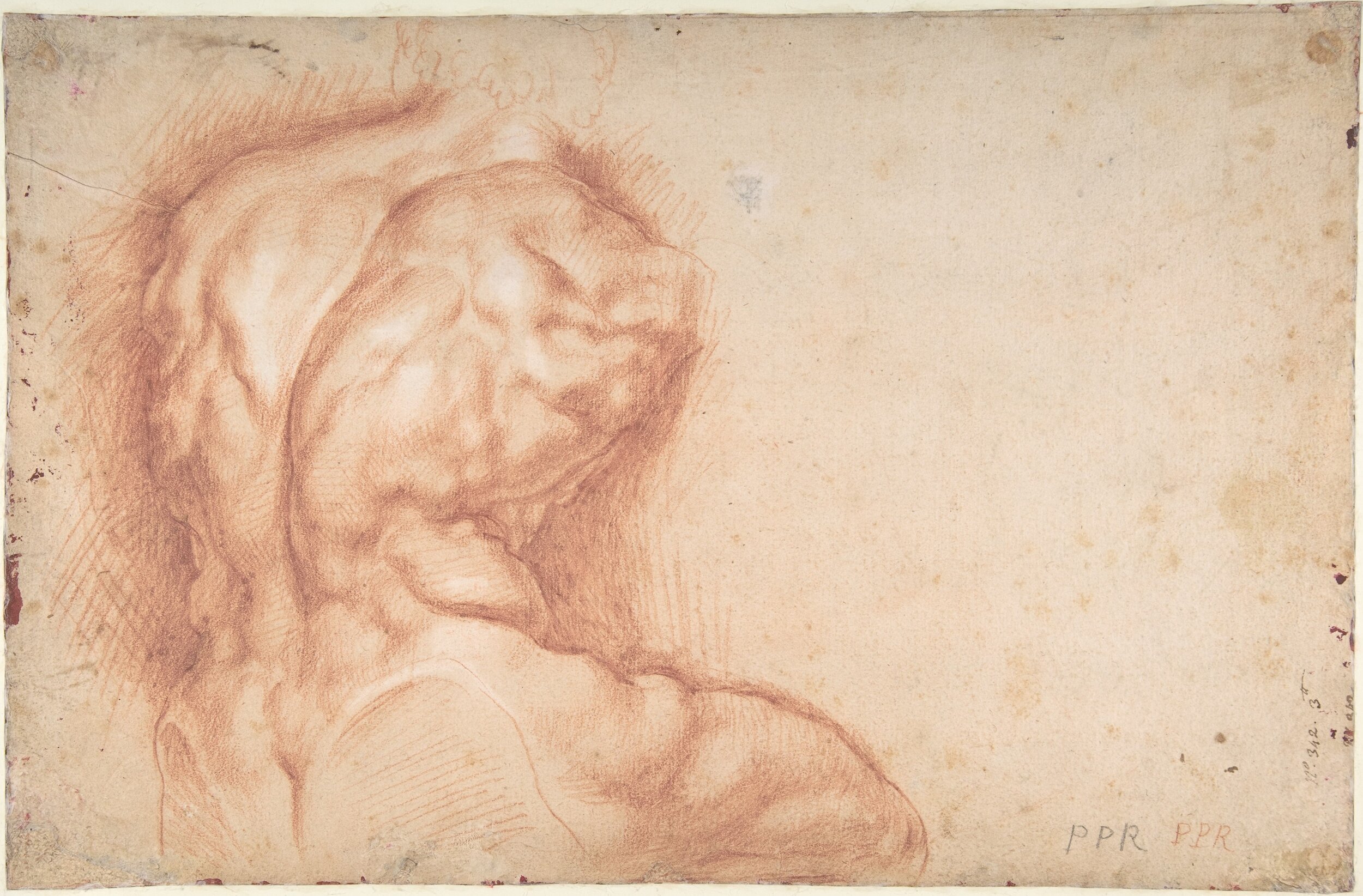
Peter Paul Rubens, Study of the Belvedere Torso (verso), undated, red chalk on paper, New York, The Metropolitan Museum of Art.
Although this extraordinary drawing is undated, it is likely to have been produced in the Belvedere Courtyard during Rubens’ first visit to Rome, around 1601.

Peter Paul Rubens, Psyche, ca. 1612-1615, black and white chalks on buff paper, Windsor, Royal Collection.
Throughout his successful career as an artist and diplomat, Rubens produced many graphic works including rapid pen and ink designs for compositions (known as primi pensieri or first thoughts), energetic oil sketches, and sensuous figures drawn from life such as this Psyche.
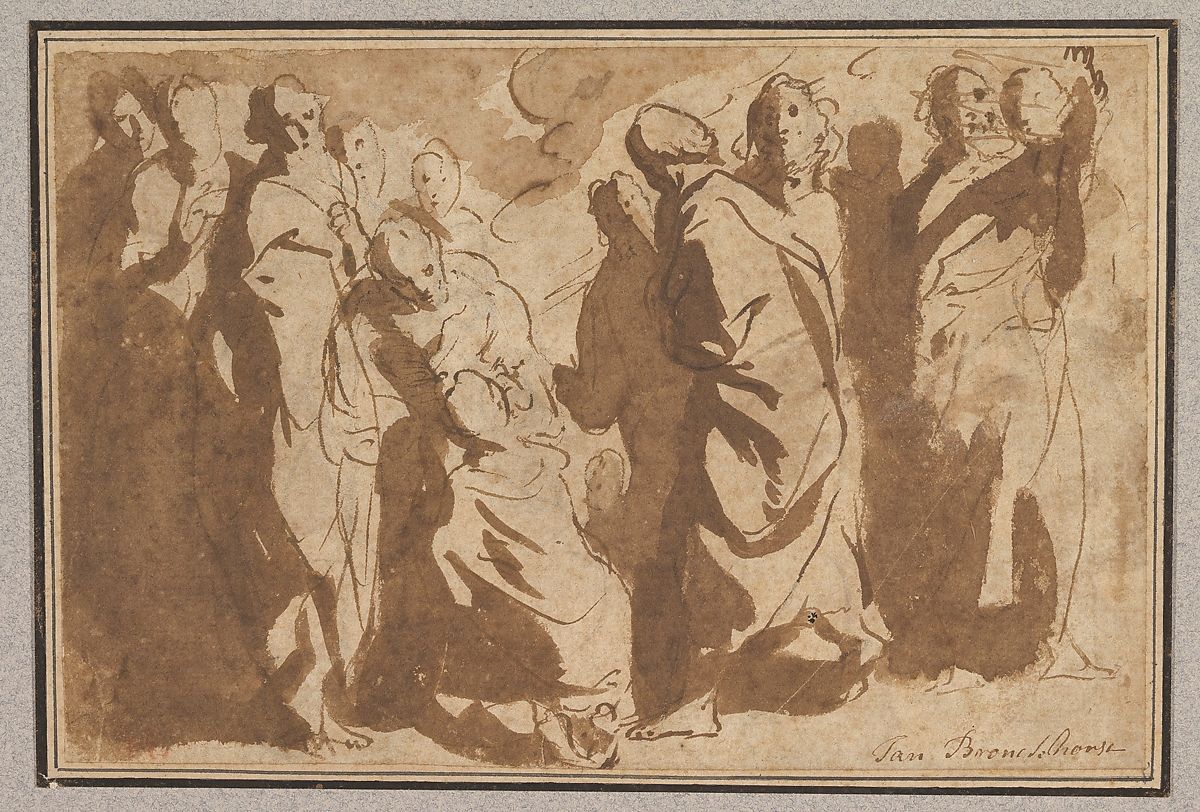
Jacob Jordaens, Christ Healing the Paralytic, ca. 1616-1620, pen and brown ink with brown wash on paper, New York, Metropolitan Museum of Art.
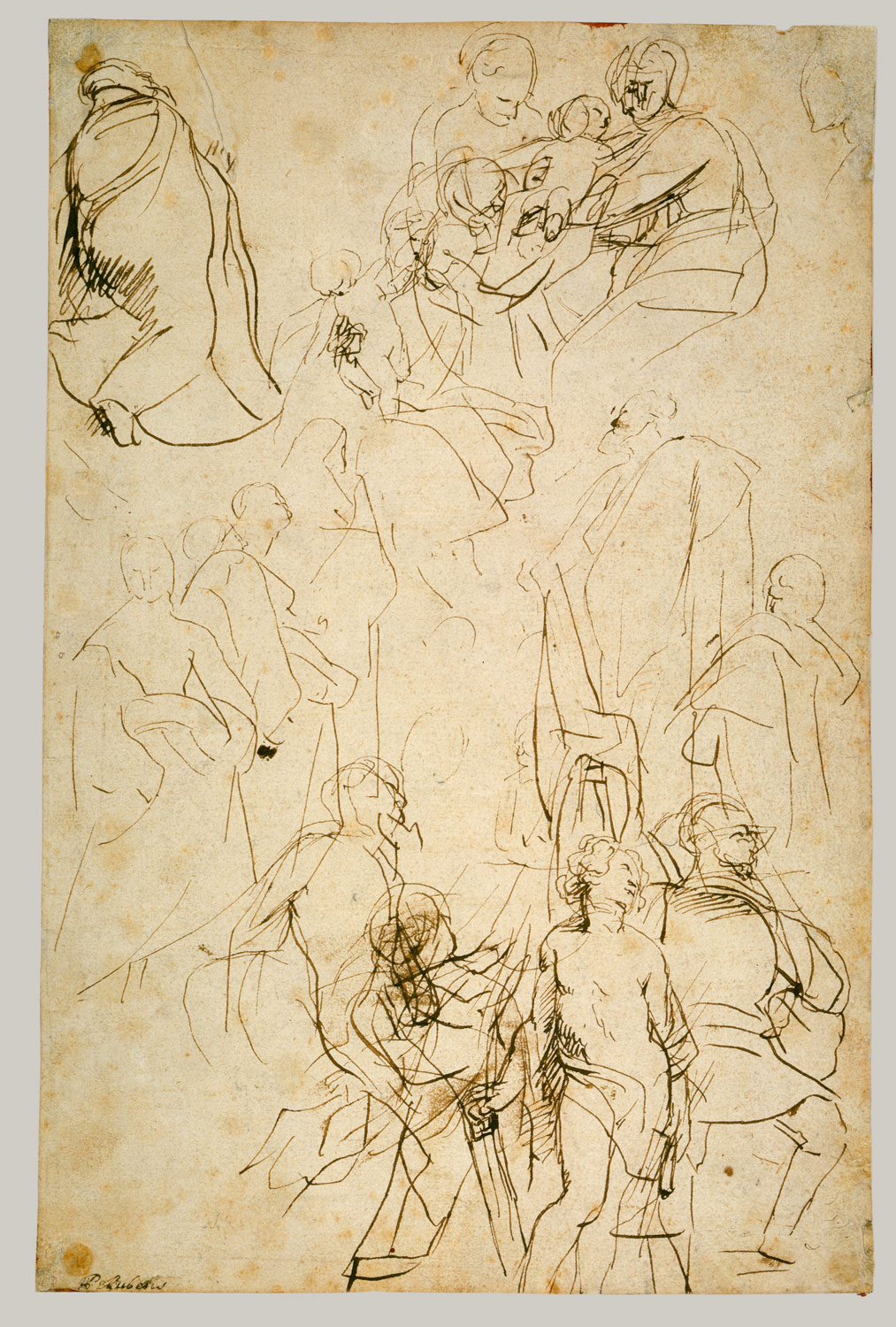
Peter Paul Rubens, The Virgin Adored by Saints (recto), undated, pen and brown ink on paper, New York, The Metropolitan Museum of Art.
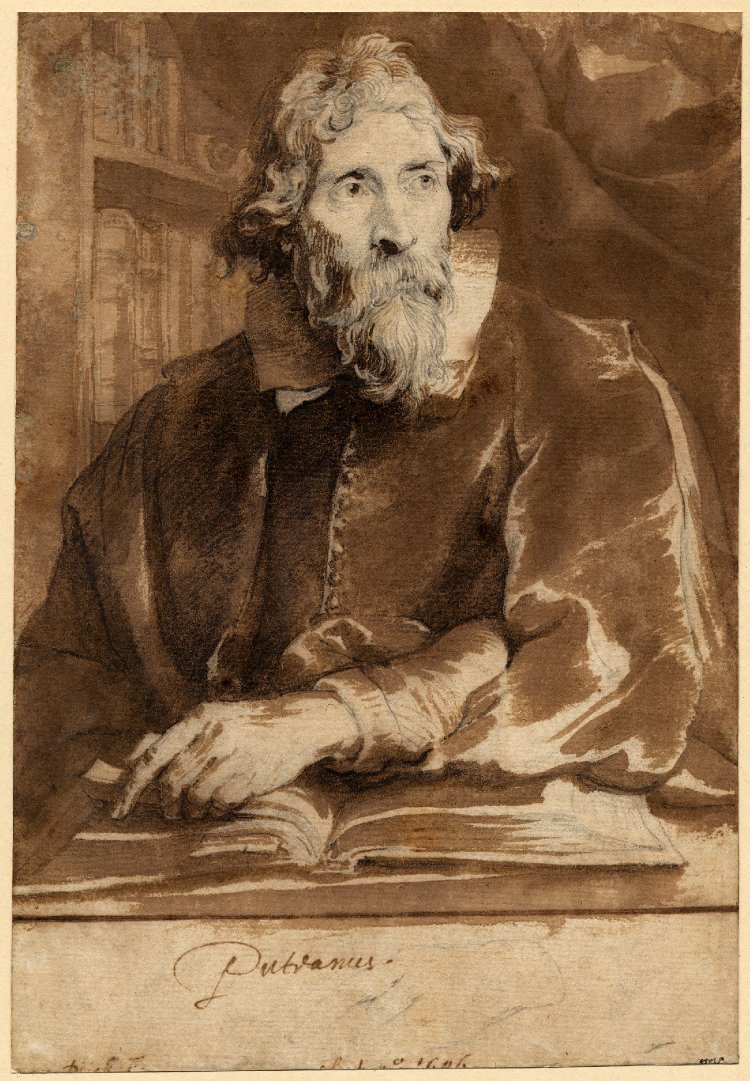
Anthony van Dyck, Portrait of Erycius Puteanus, ca. 1627-1632, black chalk with brown wash on paper, London, The British Museum.
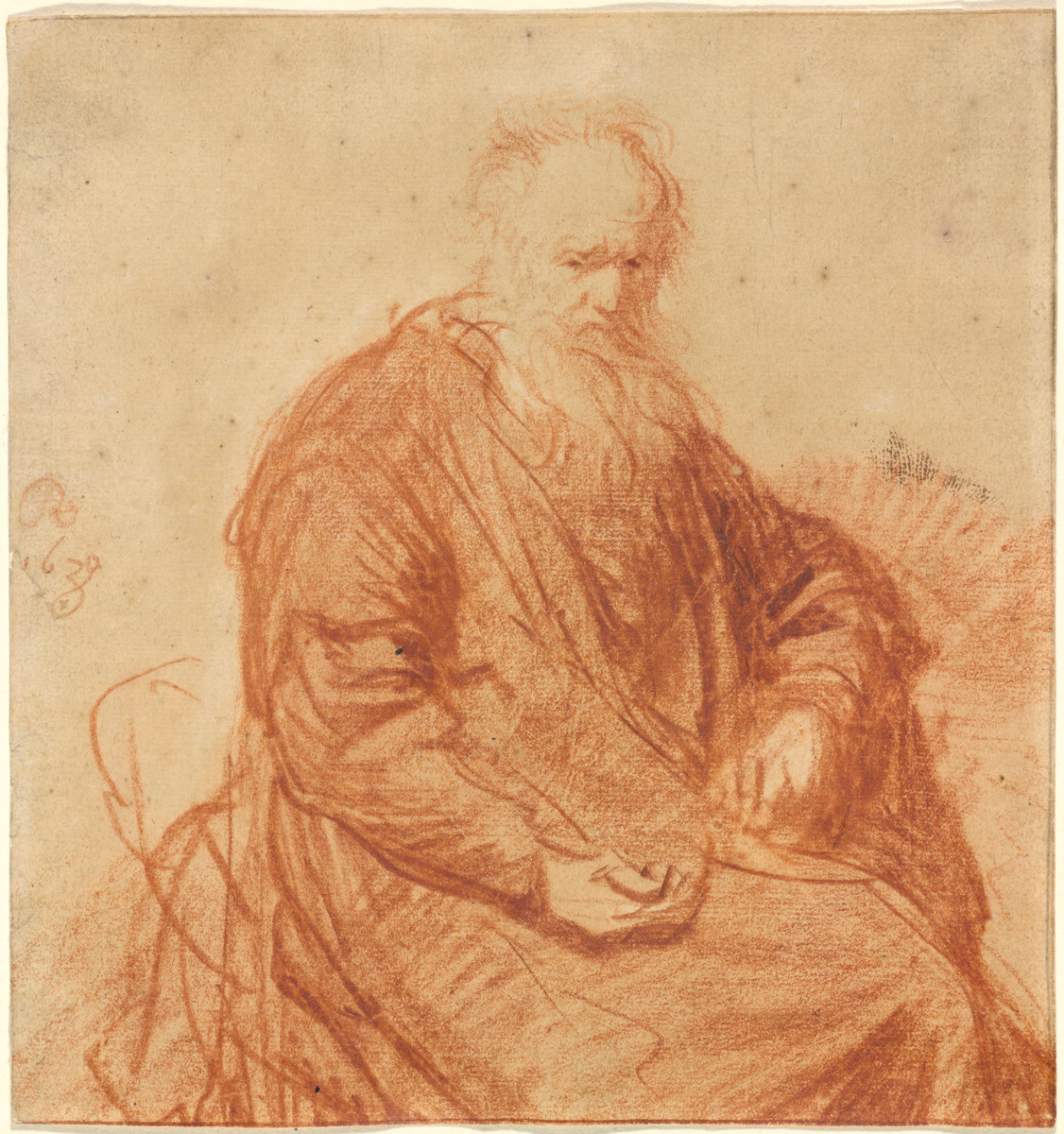
Rembrandt Harmenszoon van Rijn, Seated Old Man, 1630, red chalk on laid paper, Washington, National Gallery of Art.
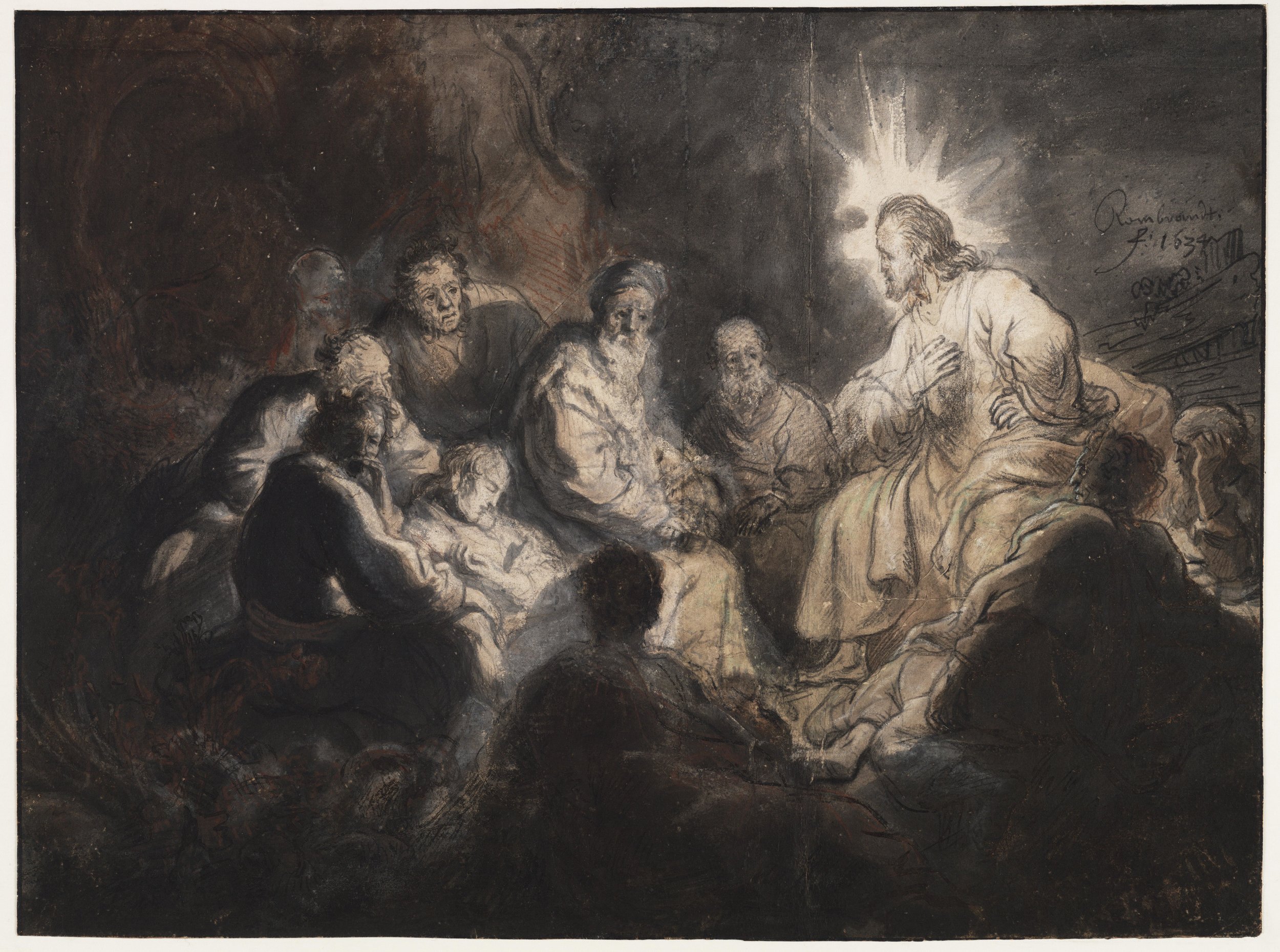
Rembrandt Harmenszoon van Rijn, Christ and His Disciples in the Garden of Gethsemane, ca. 1634, pen and ink, wash, black, red, and green chalk, white gouache, on paper, Haarlem, Teylers Museum.
Here Rembrandt uses a complex technique starting with pen and black/brown ink, then adding grey and brown wash, black, red, and green chalk, and finally white gouache (an opaque watercolour consisting of natural pigment, water, and a binding agent).
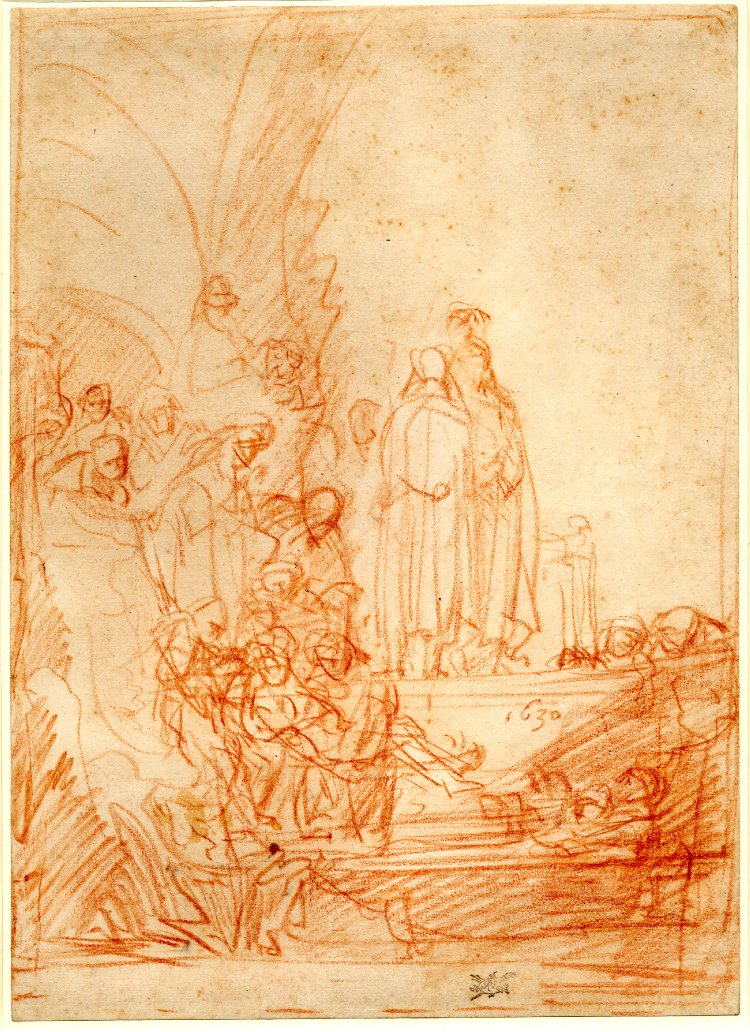
Rembrandt Harmenszoon van Rijn, The Entombment of Christ (over the Raising of Lazarus), ca. 1635, red chalk corrected with white on paper, London, The British Museum.

Circle of Rembrandt, Standing Oriental Figure, 17th century, pen and brown ink on paper, New York, Metropolitan Museum of Art.

Rembrandt Harmenszoon van Rijn, An Elephant, 1637, black chalk on paper, Vienna, The Albertina Museum.
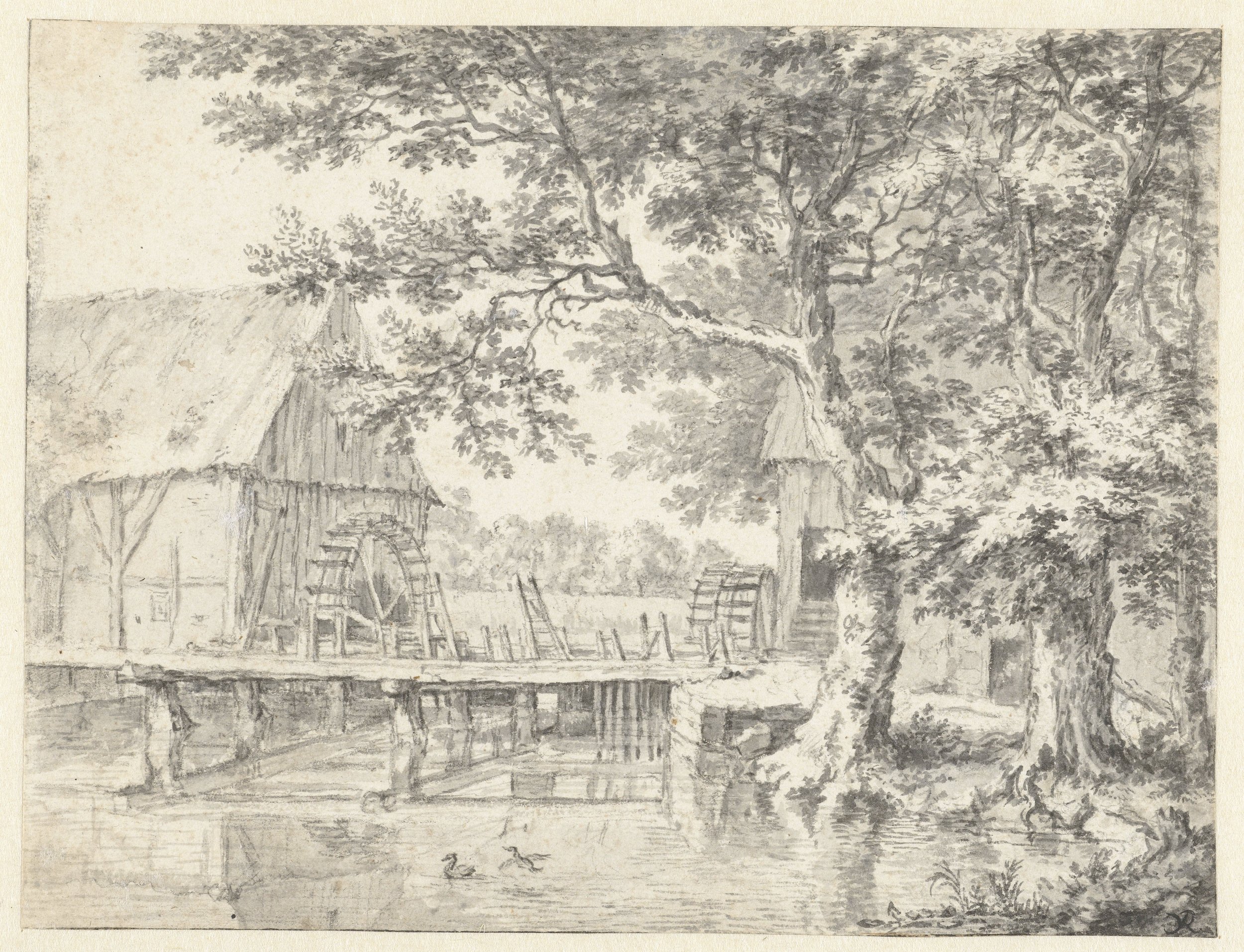
Jacob van Ruisdael, Drawing of a Double Watermill, 1670s, black chalk on paper, Amsterdam, Rijksmuseum.

William van de Velde the Younger, Dutch Ships in a Bay, mid 17th – early 18th century, pen and brown ink, brush and grey wash, over black chalk, New York, Metropolitan Museum of Art.
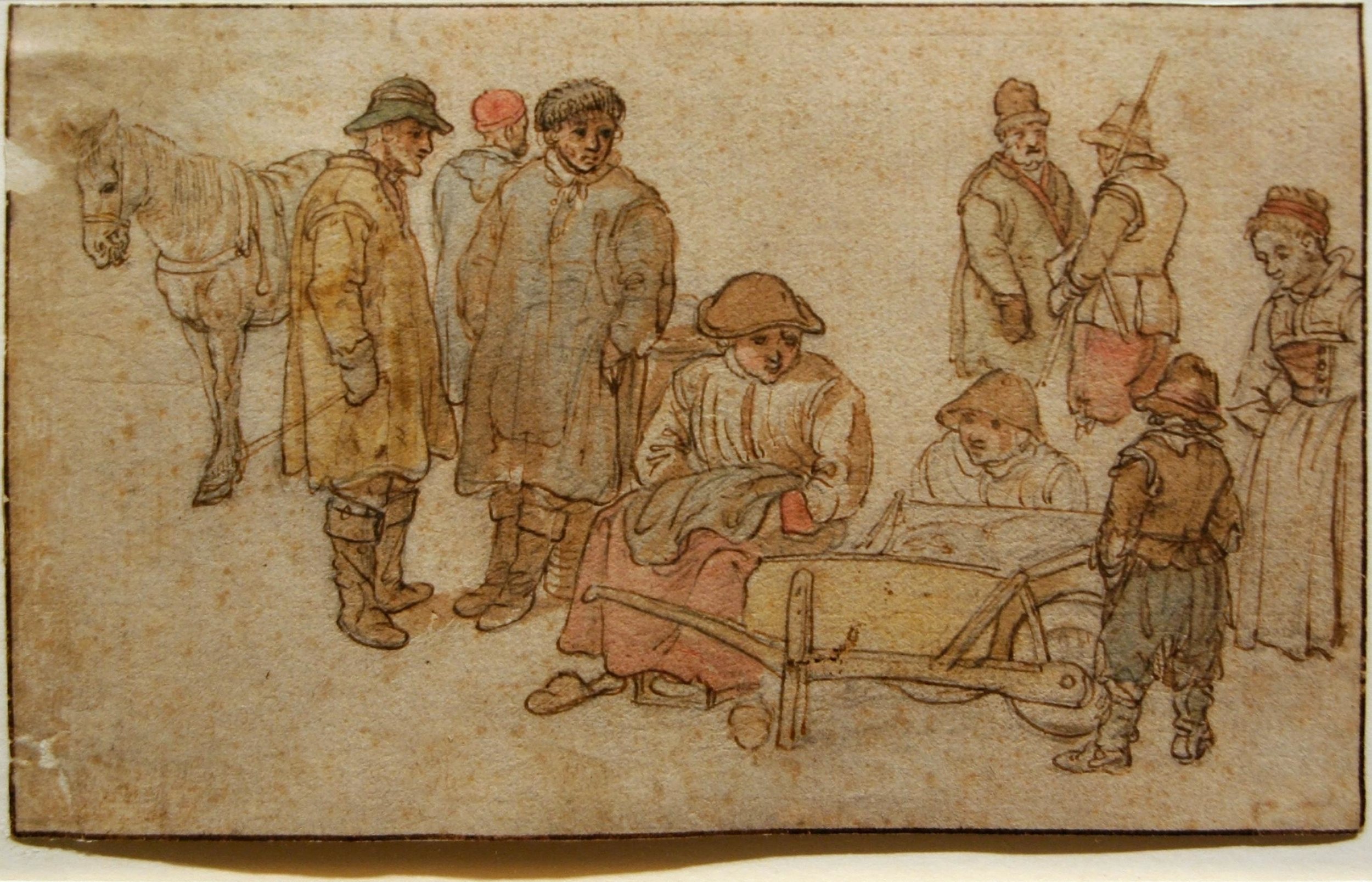
Hendrick Avercamp, Nine Peasants Around a Wheelbarrow, 17th century, brown pen and watercolour on paper, Moscow, The Pushkin State Museum of Fine Arts.















